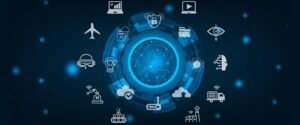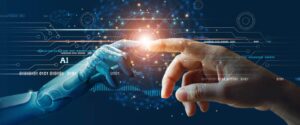AI (Artificial Intelligence) and ML (Machine Learning) are all set to become the future of technology. According to reports, AI and ML will become crucial for intelligent edge management.
We can’t imagine Intelligent Edge computing without AI and ML. If you are unaware of the enormous impact of AI and ML on Intelligent edge management, this article will help you uncover all the aspects. It will tell you how AI and ML will become the new normal for Intelligent Edge Management.
What is Intelligent Edge Computing?
Edge Cloud computing refers to a process through which the gap between computing and network vanishes. We can provide computing at different network locations through storage and compute resources. Examples of edge computing include “on-premises at an enterprise or customer network site” or local operators like Telco.
Predictions of Edge computing:
We expect the future of edge computing to grow at a spectacular rate. Since edge computing is the foundation of the network computer fabric, experts predict a steady growth of the popularity of edge computing shortly. Adding to these predictions are the new applications like IoT, 5G, smart devices, extended reality and Industry 4.0 that will enable rapid growth of edge computing. According to a prediction by Ericsson, by 2023, almost 25% of 5G users will start using intelligent edge computing. These predictions reflect the expected growth of edge computing shortly.

Challenges with Edge computing
Every coin has two sides. Similarly, if edge computing is expected to grow substantially, it will not come without common problems and challenges. The first problem is the gap between existing cloud management solutions and computing at the edge. The cloud management solutions that exist today work on large pools of homogeneous hardware, making it difficult to manage. Besides that, it requires 24/7 system administration. But if you look at the suitable environment for edge computing, you would see significant differences.
- It has limited and constrained resources:
Unlike the existing cloud management solutions, edge computing is limited by constrained resources. This is because the location and servers are made with a small factor of rack space in mind. This might seem like an advantage because you will require less space, money, etc. But the challenge with this is that one needs to have optimum utilisation of resources to get efficient computing and storing facilities.
- Heterogeneous hardware and dynamic factors:
The other significant difference is that, unlike the existing resources that require homogeneous hardware, edge computing requires diverse hardware. Therefore, the requirement can vary at different times. Requirements for hardware can vary according to varying factors like space, timing, the purpose of use etc. Let’s look at some of the diverse factors that influence the heterogeneity and dynamics of edge computing:
- Location: If edge computing is for a commercial area, it will get overburdened during rush hours. But in contrast, if you are using it in residential areas, the load will be after working hours because people will use it after coming home. So in this way, the location can matter a lot for edge computing.
- Timing: There are several hours in the day when edge computing is widely used, while at some hour’s its application is negligible.
- Purpose of application: The goal of computing is to determine what kind of hardware we require for edge computing. If, for IoT, the application will need the best services. But if it is for a simple purpose like gaming, even low latency computing would work.
- In this way, we see that edge computing has to overcome heterogeneity and diversity for optimum performance.
- Requirement of reliability and high performance from edge computing:
The third challenge for edge computing is to remain reliable and offer high performance. There is a dire need to reduce the chances of failure that are most common in software infrastructure. Therefore, to mitigate these failures, we need timely detection and analysis and remedy for the problem. If it is not correct, it can even transfer from one system to another.
- The problem of human intervention with remote computing:
If edge servers are in a remote area, there will be a problem with human intervention. Administrators can’t visit these remote areas regularly and check on the issues. Therefore, there is a need for the part of computing to become self-managing.

How AI and ML are expected to become of utmost importance for edge computing?
Artificial intelligence and machine learning are expected to become crucial for computing because the distribution of computer capability and the network has several challenges in operation. Hence AI and ML can overcome these challenges. AI and ML will simplify cloud edge operations and ensure a smooth transition of edge computing.
- AI and ML can extract knowledge from large chunks of data.
- Decisions, predictions, and inferences reached through AI and ML are more accurate and faster at the edge.
- By detecting data patterns through AI and ML, Edge computing can have automated operations.
- Classification and clustering of data can help in the detection of faults and efficient working of algorithms.
How to use AI and ML for edge computing?
Enterprises can use AI and ML in different mechanisms at edge computing locations.
Let’s look at the different tools and processes involved.
- Transfer learning (new model training from previously trained models)
- Distributed learning
- Federated learning
- Reinforcement learning
- Data monitoring and management
- Intelligent operations.
Conclusion
We can expect extended artificial intelligence and machine learning on edge to become a new normal. It will affect almost all technological tools, including edge computing. In this article, we looked at how artificial intelligence and machine learning would help edge computing in the future to overcome its challenges. But it will always remain essential to have a robust framework for technological tools not to be misused.






